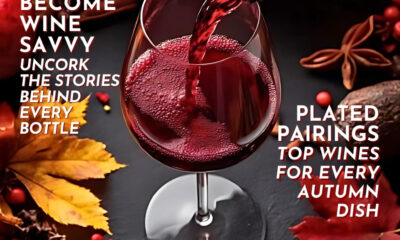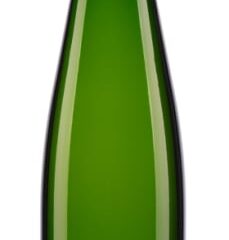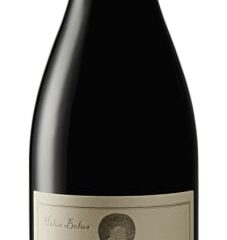Regional Wine Guides
Washington State Wineries: Pioneering New Frontiers in Winemaking
Washington State is rapidly gaining recognition as a hub for innovative winemaking, challenging traditional methods and embracing experimental techniques that highlight the region’s diverse terroir. From the use of ancient amphorae to ferment wines, to the introduction of lesser-known grape varieties, Washington’s winemakers are crafting unique flavor profiles that set them apart on the global stage. As sustainability becomes a core value in their practices, these wineries are not only producing exceptional wines but also paving the way for the future of American winemaking.

In recent years, Washington State has become a focal point for innovation in the wine industry. With a landscape often overshadowed by the well-established wine regions of California and Oregon, Washington’s winemakers are increasingly setting themselves apart by pushing the boundaries of traditional winemaking techniques. As highlighted in a recent Forbes article by Rachel King, these wineries are embracing experimental methods to create wines that are not only unique but also reflective of the state’s diverse terroir .
Breaking Away from Tradition
Tradition has long been the backbone of winemaking, with many regions adhering strictly to methods passed down through generations. However, Washington State wineries are challenging this notion by experimenting with unconventional techniques. As Forbes points out, some winemakers are using amphorae—ancient clay vessels that date back thousands of years—to ferment and age their wines. This method, while ancient, is a departure from the stainless steel tanks and oak barrels commonly used in modern winemaking . By reintroducing these old-world techniques, Washington’s winemakers are creating wines with distinct flavor profiles that stand out in the crowded market.
These innovative approaches are not just limited to the use of amphorae. Winemakers in the region are also experimenting with extended maceration periods, wild yeast fermentations, and minimal intervention practices, according to Forbes. These techniques are allowing them to craft wines that are true expressions of the local terroir, giving consumers a taste of the unique characteristics that Washington State has to offer .

The Role of Terroir in Washington’s Wine Revolution
Washington State’s diverse climate and geology play a significant role in the region’s ability to innovate. From the cool, wet climate of the Puget Sound to the arid conditions of the Columbia Valley, the state offers a range of environments that are conducive to growing a variety of grape types. As reported in Forbes, this diversity is key to the experimental spirit of Washington’s winemakers, who are constantly exploring how different grape varieties respond to the state’s unique terroir .
One example of this experimentation is the increasing popularity of lesser-known grape varieties in Washington vineyards. While Cabernet Sauvignon and Merlot have long been the dominant varieties, winemakers are now exploring grapes like Tempranillo, Mourvèdre, and even Tannat, Forbes notes. These varieties, which are typically grown in warmer climates, are thriving in Washington’s diverse microclimates, resulting in wines with bold flavors and strong character.
Sustainability: A Core Value of Washington’s Winemaking
Innovation in Washington’s wine industry isn’t just about experimenting with new techniques; it’s also about embracing sustainable practices. As Forbes discusses, many of the state’s wineries are committed to reducing their environmental impact by implementing organic and biodynamic farming practices . This commitment to sustainability is not only good for the environment but also enhances the quality of the wines produced.
Wineries like Chateau Ste. Michelle and Hedges Family Estate are leading the charge in sustainable winemaking, as highlighted in Forbes. By focusing on soil health, water conservation, and biodiversity, these wineries are setting a standard for others in the region to follow. The result is wines that are not only delicious but also made with a deep respect for the land on which they are grown .
The Future of Washington’s Wine Industry
As Washington State continues to grow as a wine-producing region, its winemakers’ willingness to innovate and experiment will be key to its success. Forbes emphasizes that the region’s commitment to sustainability, combined with its diverse terroir and the adventurous spirit of its winemakers, positions Washington as a leader in the future of American winemaking.
Looking ahead, we can expect to see more Washington wineries pushing the envelope with new techniques, exploring lesser-known grape varieties, and continuing to prioritize sustainable practices. As Forbes suggests, Washington State will undoubtedly solidify its reputation as one of the most exciting and dynamic wine regions in the world.
Regional Wine Guides
Journey Through the Heart of Napa Valley: A Love Affair With Wine

Napa Valley, with its rolling hills, sun-soaked vineyards, and world-renowned wines, is a region that commands admiration and respect. But beyond its picturesque facade lies a deep and rich history—a tale of resilience, innovation, and an unwavering commitment to excellence. From the first vines planted by European settlers to its modern-day status as a global wine powerhouse, Napa Valley’s journey is a testament to the vision and passion of those who have nurtured its land. This story traces the evolution of Napa Valley wines, exploring how a small, relatively unknown region in California rose to challenge—and even surpass—the world’s most esteemed wine traditions.
The Early Years: Indigenous Land and European Influence
Before the first vine was ever planted, Napa Valley was a land inhabited by indigenous peoples, including the Wappo tribe, who had lived there for thousands of years. They understood the land’s rhythms, the importance of its natural resources, and the significance of the valley’s rich soils. But it wasn’t until the arrival of European settlers in the early 19th century that Napa Valley’s potential for viticulture was realized.
The first grapes in Napa were planted by George Yount, an American frontiersman who recognized the valley’s fertile soils as ideal for agriculture. Yount’s initial attempts at viticulture were modest, yet they laid the groundwork for what was to come. As more settlers arrived, they too saw the promise of Napa Valley’s terroir—a French term that encapsulates the unique combination of soil, climate, and landscape that influences the character of wine. These early vintners, though lacking the knowledge of their European counterparts, were determined to create something special in this new land.
Father Junípero Serra and the Mission Grapes
The real birth of California’s wine industry, however, can be traced back to the Spanish missionaries who arrived in the late 18th century. Father Junípero Serra, a Franciscan missionary, was among the first to introduce viticulture to the region. The missionaries planted “Mission grapes,” a variety brought over from Spain, at each of the 21 missions they established along California’s coast. These grapes were hardy and well-suited to the region’s climate, providing the first sustained effort at winemaking in California.
While the wines produced from Mission grapes were rudimentary compared to today’s standards, they were a crucial step in the development of viticulture in the region. These early vineyards established the basic principles of grape cultivation that would be built upon by later generations of winemakers.
The Gold Rush and its Impact on Napa Valley
The California Gold Rush of 1849 brought a flood of settlers to the state, many of whom saw the fertile lands of Napa Valley as an opportunity to establish a new life. Among them were European immigrants who brought with them the knowledge and tradition of winemaking from their homelands. The Gold Rush didn’t just bring people; it brought capital and ambition, which fueled the growth of Napa Valley’s wine industry.

By the mid-19th century, several commercial wineries had been established in Napa Valley. Charles Krug, a Prussian immigrant, founded the valley’s first commercial winery in 1861. Krug’s winery introduced new techniques, such as using a cider press for winemaking, which improved the quality of the wine produced. His success encouraged others to follow suit, and soon, Napa Valley was dotted with vineyards and wineries, each contributing to the region’s growing reputation as a center for wine production.
The Phylloxera Outbreak of the 19th Century
Just as Napa Valley’s wine industry was beginning to flourish, disaster struck. In the late 19th century, the phylloxera pest—a tiny, root-feeding aphid—arrived in California and began devastating vineyards across the state. Napa Valley was not spared. The pest attacks the roots of grapevines, causing them to rot and eventually killing the plant. Phylloxera spread rapidly, wiping out entire vineyards and bringing the wine industry to its knees.
The impact of phylloxera was catastrophic, and for a time, it seemed that Napa Valley’s dreams of becoming a wine-producing region might be over. But out of this crisis came innovation. Winemakers, working with agricultural scientists, discovered that grafting European grapevines onto resistant American rootstock could protect the vines from phylloxera. This solution allowed the industry to recover and even improve, as it led to the introduction of higher-quality grape varieties that were better suited to Napa Valley’s terroir.
Surviving Prohibition
The next major challenge came in the form of Prohibition. In 1920, the United States government enacted the 18th Amendment, which prohibited the production, sale, and transportation of alcoholic beverages. For Napa Valley’s wineries, Prohibition was a devastating blow. Many wineries were forced to close their doors, while others turned to alternative methods of income, such as producing grape juice concentrate, which could be legally sold and often came with instructions on how to ferment it into wine at home.

Some wineries survived by producing sacramental wine for religious purposes, which was still permitted under Prohibition. This loophole allowed a few wineries to maintain operations, though the quantity produced was a fraction of what it had been before Prohibition. When Prohibition was finally repealed in 1933, Napa Valley’s wine industry was a shadow of its former self, but the end of this dark period marked the beginning of a new chapter for the region.
The Post-Prohibition Resurgence
The repeal of Prohibition in 1933 set the stage for a renaissance in Napa Valley. However, the industry did not rebound overnight. It took time, investment, and a new generation of winemakers who were committed to reviving Napa Valley’s reputation for quality wine. During this period, winemakers focused on improving viticulture techniques, experimenting with different grape varieties, and refining the winemaking process.
One of the pivotal figures in this resurgence was André Tchelistcheff, a Russian-born winemaker who came to Napa Valley in the 1930s. Tchelistcheff brought with him a deep knowledge of European winemaking techniques, including the importance of hygiene in winemaking, the use of cold fermentation, and the aging of wine in small oak barrels. His influence helped elevate the quality of Napa Valley wines, setting a new standard for excellence that would shape the region’s future.
The Paris Tasting of 1976 (The Judgment of Paris)
Napa Valley’s coming-of-age moment on the global stage occurred in 1976, during an event that would come to be known as the Judgment of Paris. In a blind tasting organized by British wine merchant Steven Spurrier, Napa Valley wines were pitted against some of the finest French wines—a contest that was considered an assured victory for the French.
To the surprise of everyone, including the judges, Napa Valley wines won top honors in both the red and white wine categories. The 1973 Stag’s Leap Wine Cellars Cabernet Sauvignon and the 1973 Chateau Montelena Chardonnay were declared the best in their respective categories, shocking the wine world and catapulting Napa Valley into the international spotlight. This event demonstrated that Napa Valley could produce wines of a quality that rivaled—and even surpassed—those of the most prestigious wine regions in the world.

The Role of Innovators and Visionaries
The Judgment of Paris was a turning point, but Napa Valley’s ascent to global wine prominence was also the result of the vision and innovation of key individuals who transformed the region. One of the most influential figures was Robert Mondavi, who founded his eponymous winery in 1966 with a mission to create wines that could compete on the world stage.

Mondavi was a pioneer in many ways. He championed the use of French oak barrels for aging, emphasized the importance of vineyard management, and was an early advocate of sustainable farming practices. Mondavi also understood the value of marketing and tourism, turning his winery into a destination that drew visitors from around the world. His efforts helped establish Napa Valley as not just a wine-producing region, but as a brand synonymous with quality and innovation.
The Rise of Sustainability and Organic Practices
In recent decades, Napa Valley has embraced a new movement: sustainability. As global awareness of environmental issues has grown, so too has the commitment of Napa Valley winemakers to sustainable and organic practices. The region has seen a shift towards farming methods that minimize environmental impact, such as the use of cover crops, organic fertilizers, and integrated pest management. Many wineries have sought organic certification, and some have gone even further by adopting biodynamic farming practices, which view the vineyard as a holistic ecosystem.

This shift towards sustainability is not just about protecting the environment; it is also about preserving the integrity of the wines. Winemakers believe that healthier vineyards produce better-quality grapes, which in turn lead to superior wines. As a result, Napa Valley’s commitment to sustainability is not just a trend, but a core principle that will continue to shape the future of the region’s wine industry.
Climate Change and its Impact on Napa Vineyards
As Napa Valley moves further into the 21st century, it faces new challenges, chief among them being climate change. The region’s vineyards are highly sensitive to changes in temperature, rainfall patterns, and the timing of seasons—all of which are being affected by global climate change. Warmer temperatures are causing grapes to ripen earlier, which can lead to higher sugar levels and, consequently, higher alcohol content in wines. This shift requires winemakers to adapt their techniques, whether through altering harvest times or experimenting with new grape varieties that can better withstand the changing conditions.
Water scarcity is another pressing issue, as prolonged droughts have become more common in California. Vintners are increasingly turning to water-efficient irrigation systems and drought-resistant rootstocks to conserve water and ensure the long-term viability of their vineyards.
The Impact of Wildfires
In recent years, Napa Valley has also been grappling with the growing threat of wildfires. The wildfires of 2017 and 2020 were particularly devastating, destroying vineyards, wineries, and homes, and leaving the landscape scarred. The impact of these fires on the wine industry has been profound, not just in terms of physical damage, but also in the form of smoke taint—a phenomenon where smoke particles infiltrate grape skins, resulting in wines with undesirable smoky flavors.

Despite these challenges, the Napa Valley wine community has demonstrated remarkable resilience. Winemakers have worked tirelessly to rebuild, employing new technologies and strategies to protect their vineyards and mitigate the effects of future fires. The collective response to these crises has highlighted the strong sense of community and shared purpose that defines Napa Valley.
Balancing Tradition with Innovation
As Napa Valley continues to navigate the complexities of the modern world, it does so with a commitment to balancing tradition with innovation. The region’s winemakers are constantly exploring new techniques and technologies, from precision viticulture to advanced fermentation processes, all while staying true to the time-honored practices that have made Napa Valley wines world-renowned.

The global wine market is more competitive than ever, with new wine regions emerging and consumer preferences evolving. Yet, Napa Valley remains at the forefront, not only because of its storied history and exceptional terroir, but also because of its ability to adapt and innovate while maintaining a deep respect for its roots.
Conclusion
Napa Valley’s story is one of endurance, innovation, and an enduring connection to the land. From the first vines planted by European settlers to the global recognition achieved at the Judgment of Paris, and the ongoing challenges posed by climate change and wildfires, Napa Valley has consistently demonstrated a capacity for reinvention. The wines of Napa Valley are not merely beverages; they are a reflection of the spirit and dedication of those who have nurtured this land for generations. As Napa Valley continues to evolve, it does so with a steadfast commitment to excellence, ensuring its place as one of the world’s premier wine-producing regions for years to come.
Regional Wine Guides
Dubai Emerges as a Major Wine Destination
Dubai is rapidly emerging as a global wine destination, blending luxury, innovation, and cultural sensitivity. With its high-end wine lounges, Michelin-starred restaurants, and the upcoming UAE Vine Festival, the city is transforming its reputation beyond opulence into a hub for wine enthusiasts. Explore how Dubai is redefining the wine experience in the Middle East, offering a unique blend of tradition and modernity that’s captivating the global wine community.

DUBAI — Once known primarily for its opulent skyscrapers, luxurious shopping malls, and desert landscapes, Dubai is now making waves in an unexpected arena: wine tourism. While the Middle East is not traditionally associated with wine production or consumption due to religious and cultural norms, Dubai is carving out a niche as a global wine destination, attracting wine enthusiasts from around the world. This transformation is part of Dubai’s broader strategy to diversify its economy and enhance its reputation as a cosmopolitan hub.
A New Chapter in Dubai’s Evolution
Dubai has always been a city of contrasts, where tradition meets modernity. In recent years, the city has expanded its hospitality offerings to include an array of wine-related experiences, catering to a growing demographic of international tourists and expatriates. The annual UAE Vine Festival, set to take place in November, is a testament to this shift, drawing global attention to the region’s burgeoning wine culture.
The festival will feature wineries from around the world, with a particular focus on showcasing lesser-known wine regions. Wine enthusiasts will have the opportunity to attend tastings, participate in masterclasses led by renowned sommeliers, and explore the art of wine pairing with Dubai’s finest cuisine. This event is just one of many initiatives aimed at positioning Dubai as a leading wine destination.

The Growth of Wine Tourism in Dubai
Wine tourism in Dubai has grown exponentially over the past decade. High-end hotels and resorts have invested heavily in their wine programs, offering extensive cellars and curated wine lists featuring rare and exclusive bottles from around the world. Many of these establishments employ experienced sommeliers who guide guests through a bespoke wine-tasting experience.
One of the most notable developments is the emergence of wine bars and lounges that cater to a discerning clientele. These venues often feature elegant interiors, live entertainment, and breathtaking views of the city, creating a sophisticated atmosphere that appeals to both locals and visitors. Themed wine nights, pairing dinners, and wine-tasting events have become regular fixtures on Dubai’s social calendar, further fueling the city’s reputation as a wine destination.

Couqley French Brasserie located in the Pullman Hotel, Downtown Dubai is the second member of the Couqley family of premium-casual French bistros in Dubai. Offering the same soulful culinary experience, fairly-priced wine, and warm personalized service as the location in JLT
Cultural Sensitivity and Innovation
Dubai’s success in cultivating a wine scene is partly due to its ability to balance cultural sensitivity with innovation. The city’s approach to alcohol consumption is regulated and mindful of the diverse cultural and religious landscape. Licensed establishments are the primary venues for wine-related activities, ensuring that the city’s wine culture remains respectful of local customs.
In addition to traditional wine venues, Dubai has also embraced cutting-edge technology to enhance the wine experience. Several luxury hotels have introduced wine vending machines, allowing guests to sample a variety of wines at their leisure. These machines use pre-paid cards, enabling visitors to enjoy a taste of different wines without committing to a full glass. This innovation not only adds a layer of convenience but also encourages exploration and discovery among wine enthusiasts.

The Influence of International Expertise
Dubai’s emergence as a wine destination is not just the result of local efforts. The city has attracted top talent from the international wine industry, including renowned sommeliers, wine consultants, and chefs. These experts bring with them a wealth of knowledge and experience, contributing to the development of Dubai’s wine programs.
One notable example is the presence of Michelin-starred chefs who have opened restaurants in Dubai. These chefs often collaborate with sommeliers to create exclusive wine-pairing menus that elevate the dining experience. The influence of international expertise has also led to the introduction of wine education programs, where enthusiasts can deepen their knowledge of viticulture, wine tasting, and pairing.

Sommelier Pouring Wine in a Michelin Star rated restaurant in Dubai
The Future of Dubai as a Wine Hub
Looking ahead, Dubai’s position as a major wine destination is poised to strengthen. The UAE Vine Festival is expected to grow in prominence, attracting even more wineries and wine lovers in the coming years. Additionally, there are plans to expand wine-related tourism initiatives, including vineyard tours in neighboring countries and exclusive wine retreats in the UAE’s desert resorts.
As Dubai continues to innovate and expand its offerings, the city’s wine scene is likely to become even more diverse and inclusive. This evolution reflects Dubai’s broader strategy of positioning itself as a global leader in hospitality and luxury experiences.
For wine enthusiasts, Dubai offers a unique blend of old-world charm and new-world innovation, making it a must-visit destination for anyone interested in exploring the world of wine.
Dubai’s rise as a major wine destination is a remarkable example of how the city continues to reinvent itself. With its blend of luxury, innovation, and cultural sensitivity, Dubai offers a wine experience unlike any other. As the city prepares to host the UAE Vine Festival, it is clear that Dubai is not just a destination for those seeking sun and sand, but also for those with a passion for the finer things in life, including wine.

For travelers seeking an extraordinary wine experience, Dubai should be at the top of their list.
Regional Wine Guides
Indian Wines: A Rich History and a Unique Terroir
India’s wine industry, though still emerging on the global stage, is rooted in a rich history that dates back to the Indus Valley civilization. Today, Indian wines, crafted from indigenous grape varieties like Anab-e-Shahi, Chenette, and Sultanina, offer a unique taste of the subcontinent’s diverse terroir. These wines, with their bold fruit and spice flavors and a distinctive minerality, stand apart from their Western counterparts, reflecting the land’s unique climate and cultural heritage. As India navigates the delicate balance between tradition and modernity, its wines are beginning to tell a story that is as complex and varied as the country itself.

India, a land of diverse climates and cultures, is also home to a burgeoning wine industry that is slowly gaining recognition on the global stage. Indian wines, primarily made from native grape varieties like Anab-e-Shahi, Chenette, and Sultanina, offer a unique expression of the country’s distinct terroir. These wines stand apart from their international counterparts, particularly those from California, by boasting strong fruit and spice flavors with a notable minerality that reflects the subcontinent’s diverse geography and climate.
The Grapes of India: Anab-e-Shahi, Chenette, and Sultanina
India’s wine story begins with its indigenous grape varieties. The Anab-e-Shahi, Chenette, and Sultanina grapes have adapted to India’s hot and humid climate, thriving in conditions that might challenge more traditional European varieties. These grapes impart a flavor profile to Indian wines that is both distinct and memorable. Anab-e-Shahi, known for its robust, fruity character, often carries hints of tropical fruits, while Chenette adds a spicy complexity that is rarely found in Western wines. Sultanina, on the other hand, provides a delicate sweetness and a hint of minerality, making Indian wines a unique tasting experience.
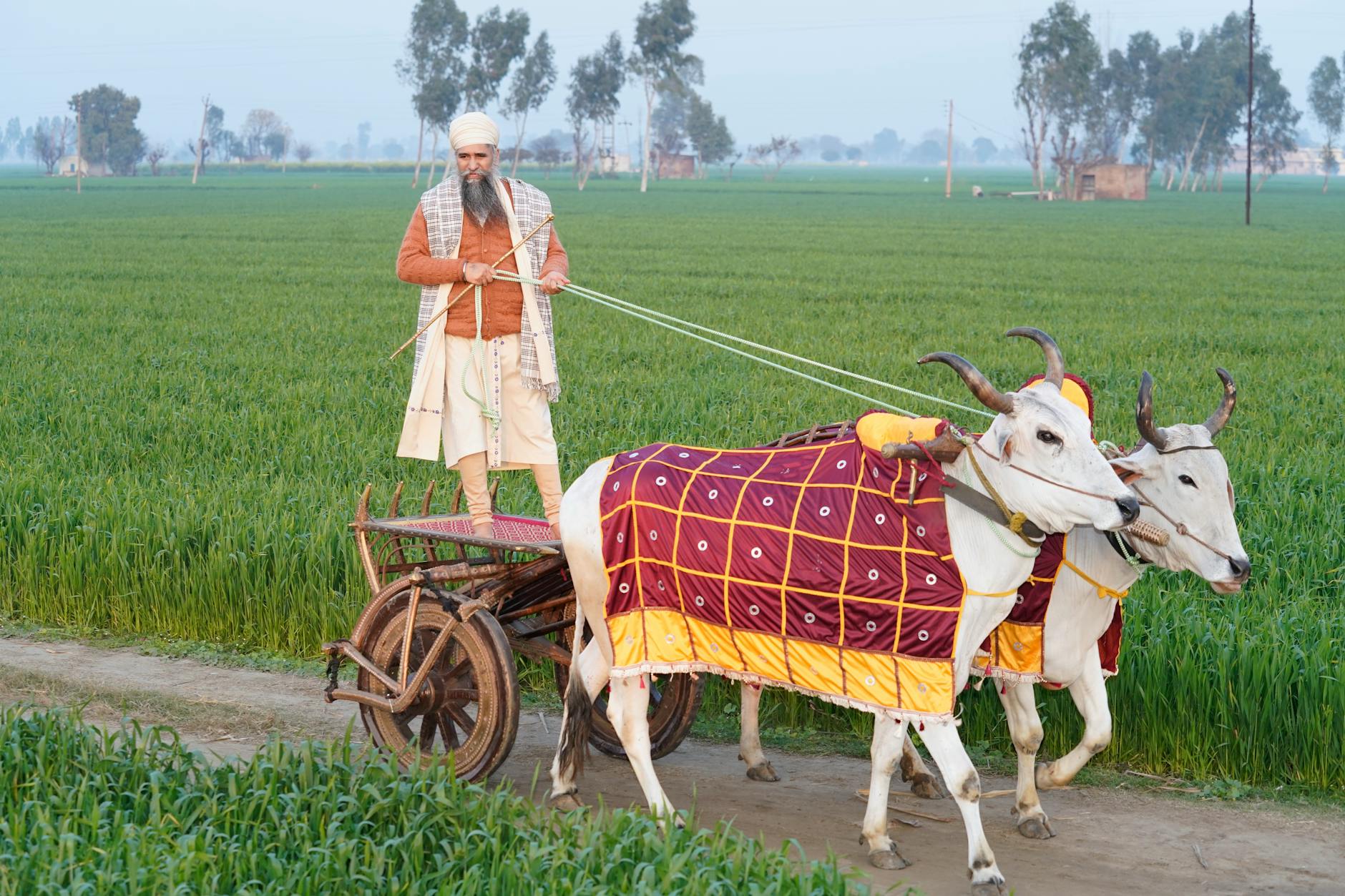
These indigenous varieties not only define the character of Indian wines but also illustrate the adaptability of viticulture to the local environment. Unlike Californian wines, which often rely on irrigation and extensive vineyard management, Indian wines reflect the natural balance between the grapes and their environment. The result is a product that is as much a testament to the land as it is to the skill of the winemaker.
A Historical Perspective: Wine in India Since the Indus Valley Civilization
The history of wine in India is as old as the country itself. The Indus Valley civilization, which flourished around 2000 BC, is believed to have engaged in early forms of viticulture. While the exact details are lost to history, archaeological evidence suggests that wine was produced and consumed as part of ancient Indian culture. Over the millennia, the techniques evolved, influenced by various dynasties and cultural exchanges with the Middle East and Europe.
However, the Indian wine industry as we know it today began to take shape in the late 20th century, with the establishment of modern vineyards and wineries. Today, regions like Nashik in Maharashtra and Nandi Hills in Karnataka are recognized as the country’s leading wine-producing areas. These regions offer the perfect blend of climate, soil, and elevation, allowing the grapes to develop the complex flavors and aromas that define Indian wines.
Cultural Considerations: Sikhism’s Stance on Alcohol
As Indian wines gain popularity, it is important to consider the cultural context within which they are produced and consumed. India is a country of diverse religions and cultural practices, and these often influence the consumption of alcohol.
In Sikhism, for example, there is a strict prohibition against alcohol. The Guru Granth Sahib, the holy scripture of the Sikhs, clearly outlines that the consumption of alcohol is considered a sin. It is believed to cloud the mind and lead to unethical behavior. This cultural aspect presents a unique challenge for the Indian wine industry, as it navigates the delicate balance between respecting religious beliefs and promoting a growing sector of the economy.

A Taste of the Future: Indian Wines on the World Stage
The future of Indian wines looks promising as more producers focus on quality and innovation. With a growing domestic market and increasing interest from international consumers, Indian wines are poised to become a significant player in the global wine industry. The combination of indigenous grape varieties, a long history of winemaking, and the distinct terroir of India creates a product that is truly unique.

For the curious wine lover, exploring Indian wines offers a journey into a rich and diverse cultural heritage, as well as an opportunity to taste something truly different. Whether it’s the fruity robustness of Anab-e-Shahi or the spicy complexity of Chenette, Indian wines offer a sensory experience that is as varied and vibrant as the country itself.
-

 Wine Industry News4 months ago
Wine Industry News4 months agoMajor Wine Mergers and Acquisitions in 2024: A Year of Strategic Consolidation
-
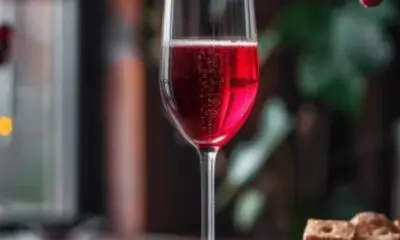
 Wine Reviews4 months ago
Wine Reviews4 months agoReview of Jam Jar Sparkling Sweet Red NV
-

 Wine Collecting4 months ago
Wine Collecting4 months agoRecommended Apps for Tracking Your Wine Inventory
-

 Wine Industry News5 months ago
Wine Industry News5 months agoWelcome to Wine Savvy Magazine
-
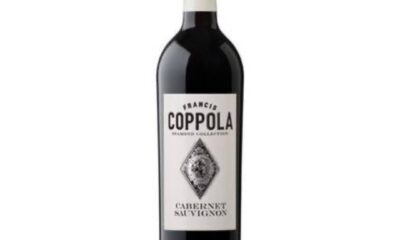
 Wine Reviews5 months ago
Wine Reviews5 months agoReview of Francis Ford Coppola Cabernet Sauvignon
-
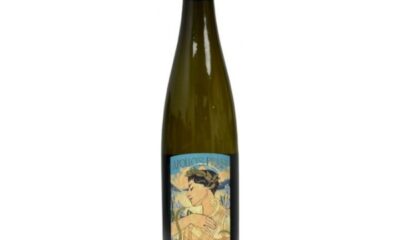
 Wine Reviews4 months ago
Wine Reviews4 months agoReview of Apollo’s Praise Riesling 2024
-
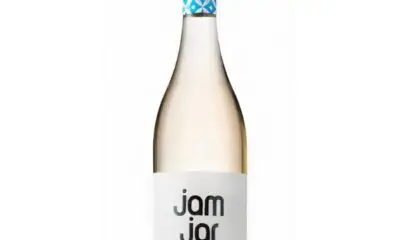
 Wine Reviews4 months ago
Wine Reviews4 months agoReview of Jam Jar Sweet White Moscato – 2021 Vintage
-

 Wine Reviews4 months ago
Wine Reviews4 months agoMass Production Over Mastery: A Critical Review of Barefoot Bubbly Pink Moscato California Champagne NV

